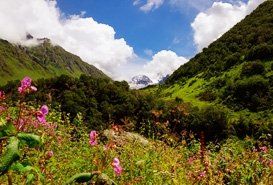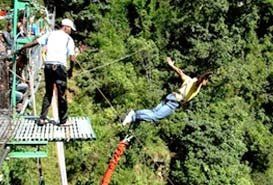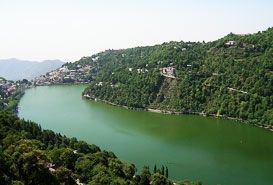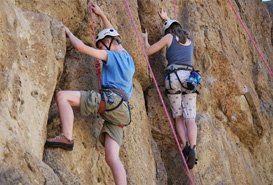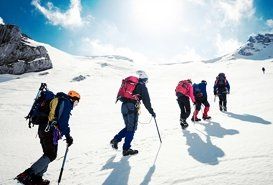Delhi to Kedarnath is a popular pilgrimage route followed by millions of devotees annually. Kedarnath Dham, dedicated to Lord Shiva, is one of the 12 Jyotirlingas and part of both Char Dhams and Panch Kedar in Uttarakhand. Located at 3,584 meters above sea level with the Mandakini River flowing beside it, the temple is surrounded by majestic snow-clad peaks that create a spiritually charged atmosphere.
This comprehensive guide provides essential information about planning your Delhi to Kedarnath Yatra, including routes, accommodation, preparation tips, and important considerations.
Planning Your Delhi to Kedarnath Yatra
Essential Preparations
- Mandatory Registration: Biometric registration for Char Dham Yatra is compulsory
- Required Documents: Carry Aadhar Card, Voter ID, PAN Card, Driving License, or Passport
- Accommodation: Book Swiss Cottages, Deluxe hotels, or budget lodges in advance, especially during peak season
- Transportation Options: Hire palki/palanquin, pony/horse, or pithus from Gaurikund
- Clothing: Pack warm jackets, gloves, sweaters, woolen socks, and raincoats
- Footwear: Comfortable shoes with good grip are highly recommended
- Medical Kit: Carry medicines for fever, cold, cough, headache, and any prescribed medications
- First Aid: Include bandages, cotton, antiseptic cream, painkillers, and pain relievers
Road Trip Requirements
If driving your own vehicle:
- Ensure your vehicle is in good condition
- Choose a vehicle with good ground clearance for rough terrain
- Carry spare parts including spark fuses, jack and spanner, air compressor, spare tire, spare tube, hydraulic jack, coolant, engine oil, and extra car keys
- Learn basic vehicle repair skills in case of breakdown
For a safe, comfortable, and memorable journey, consider booking Kedarnath Yatra Packages by Indian Holiday.
Delhi to Kedarnath Road Routes
The road distance from Delhi to Kedarnath is approximately 450 km. You can drive until Gaurikund, after which you must trek or hire transportation for the final 18 km to Kedarnath Temple.Route 1: Via Haridwar and Rishikesh (Recommended)
Delhi – Ghaziabad – Khatauli – Muzaffarnagar – Haridwar – Rishikesh – Devprayag – Srinagar – Rudraprayag – Guptkashi – Phata – Sonmarg – GaurikundThis is the fastest and most convenient route, following NH 334 and NH 7. Major stops include Haridwar, Rishikesh, Devprayag, and Rudraprayag.
Road Condition: Well-constructed national highways with smooth roads from Delhi to Rishikesh. The hilly section beyond may have some patchy areas, but proper signboards make navigation straightforward.Route 2: Via Kotdwar
Delhi – Ghaziabad – Khatauli – Najibabad – Kotdwar – Devprayag – Srinagar – Rudraprayag – Guptkashi – Sonprayag – Gaurikund This alternative route follows the Meerut-Pauri National Highway (NH 34, NH 534, and NH 7). After Najibabad, you’ll enter Kotdwar and proceed directly to Devprayag, bypassing Haridwar and Rishikesh. Road Condition: Generally good with wide roads, though some sections may be bumpy. Major towns along the way offer shops, restaurants, and accommodation options.Important Road Trip Tips
- Night driving is prohibited in hilly areas
- Consider breaking your journey at major stops like Haridwar, Rishikesh, Devprayag, Srinagar, or Rudraprayag
Best Time to Visit Kedarnath
The ideal seasons for Kedarnath Yatra are summer (April to June) and autumn (September to October) when weather conditions are favorable for outdoor activities. Avoid the monsoon season (July-August) due to risks of landslides and floods.
The temple remains open for only six months each year, closing during winter due to harsh weather and heavy snowfall. During the closure, the deity is relocated to Omkareshwar Temple in Ukhimath, where devotees can still seek blessings.
Temple Timing
- Best time for darshan: Early morning during the Maha Abhishek Ceremony or evening aarti
- 2023 Opening Dates: April 25 to November 12 (dates are announced on Maha Shivaratri each year)
Important Points to Remember During Kedarnath Yatra
- The temple operates from April to October only
- Avoid monsoon travel due to landslide and flood risks
- Pack appropriate clothing: rainwear for monsoon, heavy woolens for winter, light woolens for summer evenings
- Carry sun protection (sunscreen, sunglasses) to prevent sunburn
- Pack snacks like dry fruits, chocolates, chips, and biscuits for the journey
- Bring a battery-operated torch, fully-charged power banks, and extra camera batteries
- Only BSNL network operates in the region
Registration Process
Registration is mandatory and can be done online or offline:- Online: Register through the Uttarakhand Char Dham Devasthanam Management Board (UCDDMB) website
- Offline: Visit registration centers at Haridwar railway station, Rishikesh bus stand, Guptkashi, Phata, or Sonprayag with photo ID proof
Accommodation Options
In Kedarnath
Limited options including GMVN camps/tents and rest houses (bookable through GMVN’s official website)Nearby Areas
- Guptkashi: Camp Nirvana, Rawat Tourist Lodge, Hotel Madhuban
- Phata: Yatra Hill Resort, Hotel Hari Shri
- Gaurikund: Shivalik Valley Resort, Hotel Dev Dham
- Sonprayag: Hotel Kedar Resort
Places to Visit
Near Kedarnath Temple
- Gandhi Sarovar (Chorabari Tal): A glacial lake at 3,900 meters altitude, 3 km trek from the temple
- Sonprayag: Confluence of Mandakini and Basuki Rivers, a sacred bathing spot
- Gaurikund Temple: Dedicated to Goddess Parvati, featuring hot springs for holy dips
- Vasuki Tal: Glacial lake at 4,135 meters offering panoramic views of Chaukhamba Peak, 5 km from Kedarnath
- Shankaracharya Samadhi: Final resting place of Adi Shankaracharya
En Route Delhi to Kedarnath
- Haridwar: Har ki Pauri, Chandi Devi Temple, Maya Devi Temple, Sapt Rishi Ashram
- Rishikesh: Triveni Ghat, Ram Jhula, Laxman Jhula, Bharat Mata Temple
- Devprayag: Confluence of Alaknanda and Bhagirathi Rivers, Raghunath Ji Temple
- Srinagar: Kamleshwar Temple, Dhari Devi Temple
- Rudraprayag: Augustmuni, Koteshwar Mahadev Temple, Chopta, Ukhimath
- Guptkashi: Vishwanath Temple, Manikarnika Kund, Ardhnarishwar Temple
Kedarnath Yatra Cost and Itinerary
The typical cost ranges from ₹10,000 to ₹15,000 per person, varying based on accommodation, transportation, duration, and sightseeing choices.
6-Day Itinerary from Delhi (Self-Drive)
Day 1: Delhi – Haridwar (230 km, 6-7 hours)- Drive from Delhi to Haridwar
- Evening visit to Har ki Pauri for Ganga Aarti
- Overnight in Haridwar
- Drive to Guptkashi
- Explore the local area
- Overnight in Guptkashi
- Drive to Sonprayag (30 km, 45 minutes)
- Trek or hire transport to Kedarnath (16 km, 5-6 hours)
- Evening temple visit and aarti
- Overnight in Kedarnath
- Early morning Maha Abhishek Ceremony (4:45 AM)
- Trek back to Sonprayag (16 km, 5-6 hours)
- Drive to Rudraprayag (73 km, 3 hours)
- Overnight in Rudraprayag
- Drive to Haridwar with stop in Rishikesh
- Explore Ram Jhula, Laxman Jhula, and Triveni Sangam
- Evening Ganga Aarti at Har ki Pauri
- Overnight in Haridwar
- Return to Delhi
Additional Tour Packages
Explore these related tour options:Kedarnath Tour Packages
Cities of Uttarakhand
- Bageshwar
- Barkot
- Bhimtal
- Chamba
- Chamoli
- Champawat
- Doonagiri
- Gaurikund
- Gopeshwar
- Guptakashi
- Haldwani
- Hanuman Chatti
- Har ki Doon
- Joshimath
- Karanprayag
- Khirsu
- Kotdwara
- Nandaprayag
- Naukuchiatal
- Pauri
- Pithoagarh
- Rudraprayag
- Rudrapur
- Sattal
- Tehri
- Uttarkashi
- Yamkeshwar
- Corbett
- Chopta
- Devprayag
- Gangotri
- Hemkund
- Mukteshwar
- Ranikhet
- Valley of Flower
- Yamunotri
- Dhanaulti
- Almora
- Badrinath
- Lansdowne
- Kausani
- Dehradun
- Haridwar
- Auli
- Nainital
- Mussoorie
- Rishikesh
Things To Do in Uttarakhand
Why Book With Us
35+
Years of Travel Experience
100+
Travel Experts To Assist You
03+
Million Satisfied Guests
Ministry
of Tourism Accredited
- 5/5 Rating:
- 4/5 Rating:







